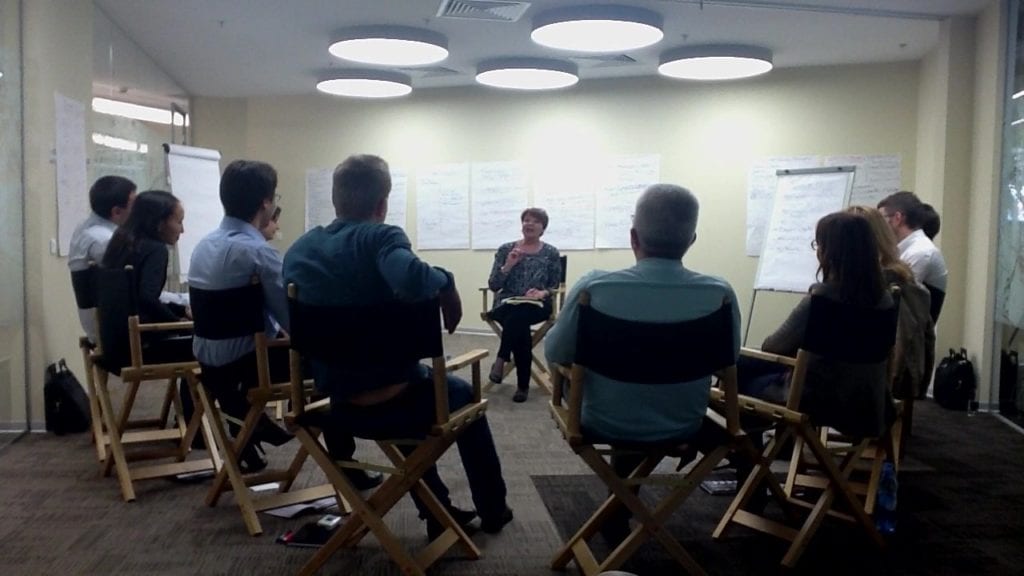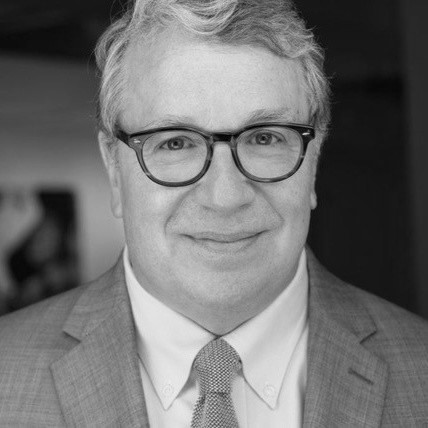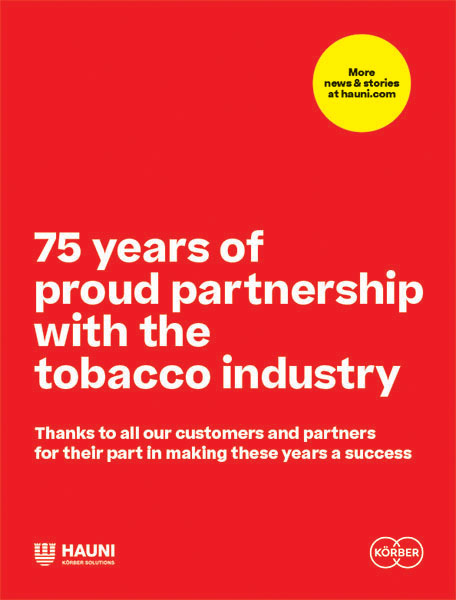The World is a Stage
- Print Edition
- July 1, 2021
- 0
- 0
- 14 minutes read


The TAI Group employs the principles of acting to improve human interactions in corporate teams.
By Stefanie Rossel
It’s a universal truth: A leader is only as good as his or her team. And a team is only as good as its leader. To jointly achieve top results, optimal human interaction is key. This is particularly true in a business environment characterized by external pressures and transformation as is the case in the tobacco industry. Motivating a group of individuals around a product that faces moral and ethical condemnation on a global scale can be a demanding task for a leader. As the sector gradually transitions from combustible cigarettes toward less hazardous products, its players face new challenges, such as recruiting people from pools that are not traditional for the tobacco industry, for instance, consumer electronics or pharmaceuticals.
An unusual approach to enhance human interaction under such difficult circumstances comes from the New York City-based TAI Group. Founded in 1979 as an acting school, the company uses the processes and skills that performers practice. Unlike your typical acting school, TAI started by helping actors understand themselves as artists. “We would ask them questions like, ‘Who are you? What gets you out of bed in the morning? What are you trying to say with your art, beyond just getting another gig?’” explains Gifford Booth, TAI’s co-founder and CEO. In 1996, the company was hired by one of the world’s leading consulting firms to take the principles of the performing arts into the corporate world. “We applied the same methodology we’d always used with the artists we coached,” says Booth. “We helped these corporate men and women understand their identities as leaders. Then we helped them develop communication skills to reach a broad spectrum of audiences. It turned out that as the participants came to express themselves more authentically, their leadership presence grew more compelling. Their interpersonal skills expanded. That is why they became better salespeople and grew more effective as team leaders and mentors. That is why the culture around them began to shift. As they became more collaborative, so did everyone in the environment.”
Since then, TAI has worked with leading global companies and startups alike across a span of industries and on six continents. Asking the right questions is still at the heart of the company’s human interaction solutions, Booth points out. “To this day, the power of our work begins and ends with helping people connect to what drives them, what they want to create for themselves and others and how to align and mobilize others around a vision.”

Creating awareness
Curiosity informs every part of TAI’s relationship with a client, he adds. “Our solutions are experiential and exponential. Whether we are working with leaders, teams or brands, we start with the interactions and experiences of the individual.”
When a leader understands what drives them and what they want to cause through their role, they are better able to create and build teams. When team members understand each other’s aspirations, values and motivations, they align more naturally around what they have in common. When individuals, regardless of role, can speak with ease about what they need from relationships and surroundings to be at their best, they are more likely to create a culture that invites collaboration, learning, innovation and accountability.
“Imagine this developmental work taking hold with a leader and team that you know,” muses Booth. “Can you see the kind of clarity, connection and energy that is created? When leaders who are authentic, empathetic and skilled at inspiring action join forces with teams that are collaborative, innovative and accountable, the results are immediate and measurable.”
The company aims to develop resilient, aware and high-performing individuals. “We do this by supporting them to bring to life how they best operate in the world, to uncover the meaning and motivation under every action, decision and interaction. We know that when a person is guided by their essential drivers, they embody a natural self-confidence, develop resiliency and consistency and have ‘a bias for action.’ This self-awareness coupled with communication tools, informed by the principles of the performing arts, gives them the skills and flexibility to adapt to any audience to make the impact they aspire.”
The program is also designed to align, connect and motivate teams, which are supported to uncover an unwavering purpose, sourced from shared values and principles, which establishes meaning and motivation specific to the group. A third pillar is grounding innovative and high-performing brands in conscious commitment. “When innovative, high-performing brands use an unwavering purpose, sourced from shared values and principles, to influence their actions and communication, they act with conscious commitment,” says Booth. “They become grounded in attitudes and behaviors that engender trust, connectedness and selflessness. Acting from a place of conscious commitment to align vision, strategy, business models, policies and communication ensure that brands continuously walk the talk.”

Into the limelight
In contrast to other executive coaching programs, TAI’s clients actively participate, improvise and create in the moment, learning how to enhance their impact and confidence by practicing the skills needed to deal with real-time needs and challenges. “Our work is designed to create and accelerate the development of subconscious memory, so-called muscle memory. Once a client or participant has inculcated the ideas and behaviors so that they don’t require conscious thought and effort, they save a lot of mental energy and can work harder and get more out of their actions with less effort.”
Asset-based and encouraging, TAI’s methods of working are the opposite of bullying and browbeating, according to Booth. “And they do take a bit of courage and willingness, there is no doubt about that,” he says. “My colleagues have an uncanny way of drawing people out so that even the most introverted participants experience their impact.”
While he and his colleagues come from the theater, Booth insists they are not offering acting classes, but educating participants how to make the best use of well-established acting techniques. “Stepping onto a stage is an act of courage, no matter how many times you’ve done it,” he says. “Actors establish a presence by practicing breathing techniques, being conscious of their posture and controlling their energy.”
To fully understand what they have to say and what they want to cause in others by saying it, an actor analyzes the character they are about to play. They create a relationship with the audience by investigating their reactions and sensing their energy, and they become skilled at giving and receiving feedback. Performances are honed and perfected through candid assessment and constant reinvention.
“Rehearsal and practice are necessary,” Booth emphasizes. “A work is perfected through experimentation, imagination and play. Actors try things, see if they work, and then adopt them or try something else. You can substitute the word leader for the word actor in any of the examples above to understand how the theater informs our work. We create a learning laboratory for businesspeople to practice finding their presence, analyzing their character, creating a relationship with their audience, giving and receiving feedback—and to rehearse it all again and again until it is a part of them.”
TAI works on the universal principles that enhance human interactions: Know yourself. Value relationships. Communicate in a way that has impact. Collaborate. Innovate. “These elements are not new, but since our background is in theater, we have a unique way of using them with others. We know that when they are actively employed, the show goes on. People know their parts, and they execute them with commitment and energy. When we have the best of everyone, when we’ve created the conditions for full participation and contribution, the result is the best production that can be.”
TAI’s approach is doing the opposite of teaching people to fake it. “Bad acting—something we call ‘schmacting’—is surface,” he says. “As an audience, we see it, feel it—and ultimately we won’t buy it. Powerful acting, the kind that moves us emotionally and intellectually, is rooted in deep truths. Quality acting training is based on the authenticity of the individuals. Acting schools don’t train young women to be copies of Meryl Streep nor young men to be George Clooney clones. Acting training is based on bringing out the unique characteristics of the individual. In that same way, we don’t want to turn anyone into a fake, robotic leader. We fight against that. We want you to lead from who you are with your unique style and strengths. We encourage your own excellent character to inform your personal leadership. When you lead from this place, rather than from who you think you should be, the results are startling and abundant.”

When a leader understands what drives them and what they want to cause through their role, they are better able to create and build teams.
Targeting the C-suite
First and foremost, TAI’s offer is targeted at executive-level managers. “This kind of work, which is literally about changing behavior, must be supported from the top down,” underlines Booth. “Any time real change must be rolled out, top management will find this kind of work invaluable because they need their leaders to go out and light fires.”
The company’s work, however, is also useful for emerging leaders tasked with incentivizing their business units. “These people are usually younger and may have a different kind of energy about them,” says Booth. “They might use a different language, and they must create relationships so that the strategies they communicate can cascade down to where the action is.”
TAI also works directly with human resources leaders who have their fingers on the pulse of their people, Booth adds. “Their ability to move people forward, to help people work with each other well, is paramount to success. Enhancing human interaction is a way to do that.”
The TAI methodology has been designed to prepare its participants to be able to cope with changes occurring after the coaching has been concluded. Every time the membership of a team changes, the task or focus changes, or the leader changes, the group moves through some fundamental stages of development, Booth explains. “Roles must be established and clarified. Goals and objectives must be articulated. Expectations and values around interpersonal dynamics must be investigated and explored. Communication is key to moving through the process. Teams who have worked with TAI have a blueprint for how to approach a new alignment. Because the work is experiential and requires the attention and input of every participant, the work is memorable. One of our greatest sources of satisfaction is knowing that the work can be replicated by those who have participated in it. We teach a group, and they teach the next group.”

Into a new role
Helping leaders to communicate beyond ambiguity is an important part of TAI’s work, especially in controversial industries, such as tobacco. “We can assist the industry’s transformation by helping executives and their teams align with the new corporate strategies and effectively cascade those communications company-wide. We can help them prototype the communications they want to share. We can help them know what their stakeholders require from them to listen, understand and act. We help them mitigate risk by having them rehearse, clarify and learn in real-time.”
Philip Morris International (PMI) has made use of TAI’s services for the past 15 years. TAI helped the cigarette manufacturer to face conflicts and challenges that their leaders confront every day, Booth says. In their coaching, TAI dealt with questions such as how a PMI leader could create lines of ethical clarity for its employees on selling a product with considerable health risks, how they could hold to the line of a global strategy in the face of complex local political opposition or regional law requirements, and how they could motivate a team divided by ethnicity and culture. As the tobacco company moves its business focus toward reduced-risk products, these issues have been complemented by a look at how PMI could bring large-scale technological innovation, i.e., the company’s heated-tobacco product IQOS, to their existing product line and successfully advocate for that product in their global markets.
“We have helped PMI executives and their teams face these issues head on with no evasion, driven by their values, bringing their full self into these situations, using razor-sharp communication to navigate the complexities, and helping all of their stakeholders to connect, relate, collaborate and create,” says Booth.
